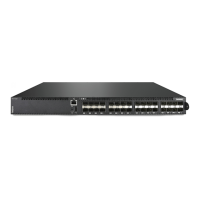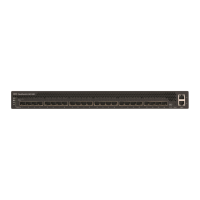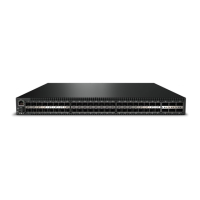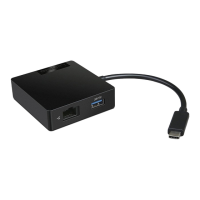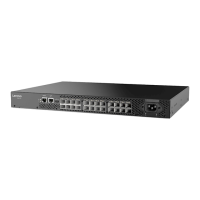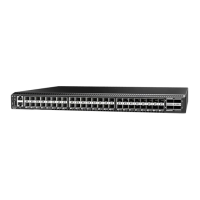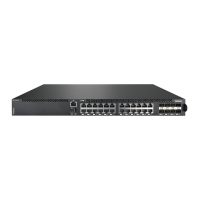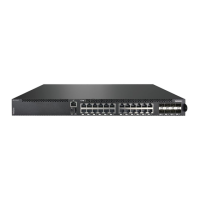Do you have a question about the Lenovo Flex System Fabric CN4093 and is the answer not in the manual?
Explains accessing the CN4093 for configuration, viewing info, and statistics via various interfaces like console, Telnet, SSH, or web browser.
Details using the built-in Setup utility for first-time switch configuration.
Covers updating the Network Operating System (N/OS) software running on the switch.
Discusses changing default passwords, using Secure Shell/Copy, end-user access control, and protected mode for switch security.
Explains secure remote administration using RADIUS, TACACS+, and LDAP for authentication and authorization.
Describes authenticating devices on LAN ports for network access and security, especially for blade servers.
Details using filters to permit or deny traffic based on source, destination, and packet attributes.
Covers configuring Virtual Local Area Networks (VLANs) for segmentation, tagging, protocol-based, and private VLANs.
Explains grouping physical ports to aggregate bandwidth for large-scale network devices.
Discusses STP, RSTP, PVRST+, and MSTP for efficient path selection and loop prevention.
Details using Virtual Link Aggregation Groups (vLAG) to form LAGs spanning multiple switches.
Covers QoS features, including IP filtering with ACLs, Differentiated Services, and 802.1p priorities.
Describes implementing the stacking feature for the Lenovo Flex System Fabric CN4093.
Provides an overview of allocating resources based on logical needs, not physical components, in a data center.
Discusses using virtual NIC (vNIC) technology to divide NICs into multiple logical, independent instances.
Covers virtual machine (VM) support on the CN4093, including VM discovery and group configuration.
Explains Converged Enhanced Ethernet (CEE) features like PFC, ETS, and FIP Snooping for Fibre Channel over Ethernet.
Details how to configure the CN4093 for use with Fibre Channel networks, including port modes and zoning.
Covers configuring the CN4093 for IP routing using subnets, BOOTP, and DHCP Relay.
Details configuring IPv6 addresses and managing the switch via IPv6 host management.
Explains configuring Internet Protocol Security (IPsec) for securing IPv4/IPv6 communications via authentication and encryption.
Describes how Enterprise NOS implements standard Routing Information Protocol (RIP) for exchanging route information.
Covers IGMP Snooping or IGMP Relay to conserve bandwidth in multicast environments.
Explains how Multicast Listener Discovery (MLD) is used with IPv6 to support host requests for multicast data.
Discusses Border Gateway Protocol (BGP) concepts and features supported in Enterprise NOS.
Covers key Open Shortest Path First (OSPF) concepts and their implementation, with configuration examples.
Describes how the CN4093 supports redundancy through aggregation and Hotlinks.
Explains how the CN4093 supports high-availability network topologies using Layer 2 Failover.
Details how the CN4093 supports high-availability network topologies using Virtual Router Redundancy Protocol (VRRP).
Explains how Link Layer Discovery Protocol helps neighboring devices learn about each other's ports and capabilities.
Covers configuring the switch for management through an SNMP client.
Describes Service Location Protocol (SLP) for dynamic directory services and service discovery.
Details managing Features on Demand (FoD) licenses and allocating bandwidth.
Discusses determining which protocols can be enabled for secure traffic and authentication management.
Covers configuring the RMON agent on the switch for network monitoring data exchange.
Explains using the embedded sFlow agent for sampling network traffic and providing monitoring information.
Discusses tools to copy selected port traffic to a monitor port for network analysis.
Describes common terms and concepts used throughout the guide.
Provides information on obtaining help and technical assistance for Lenovo products.
Provides trademark and other compliance information.


